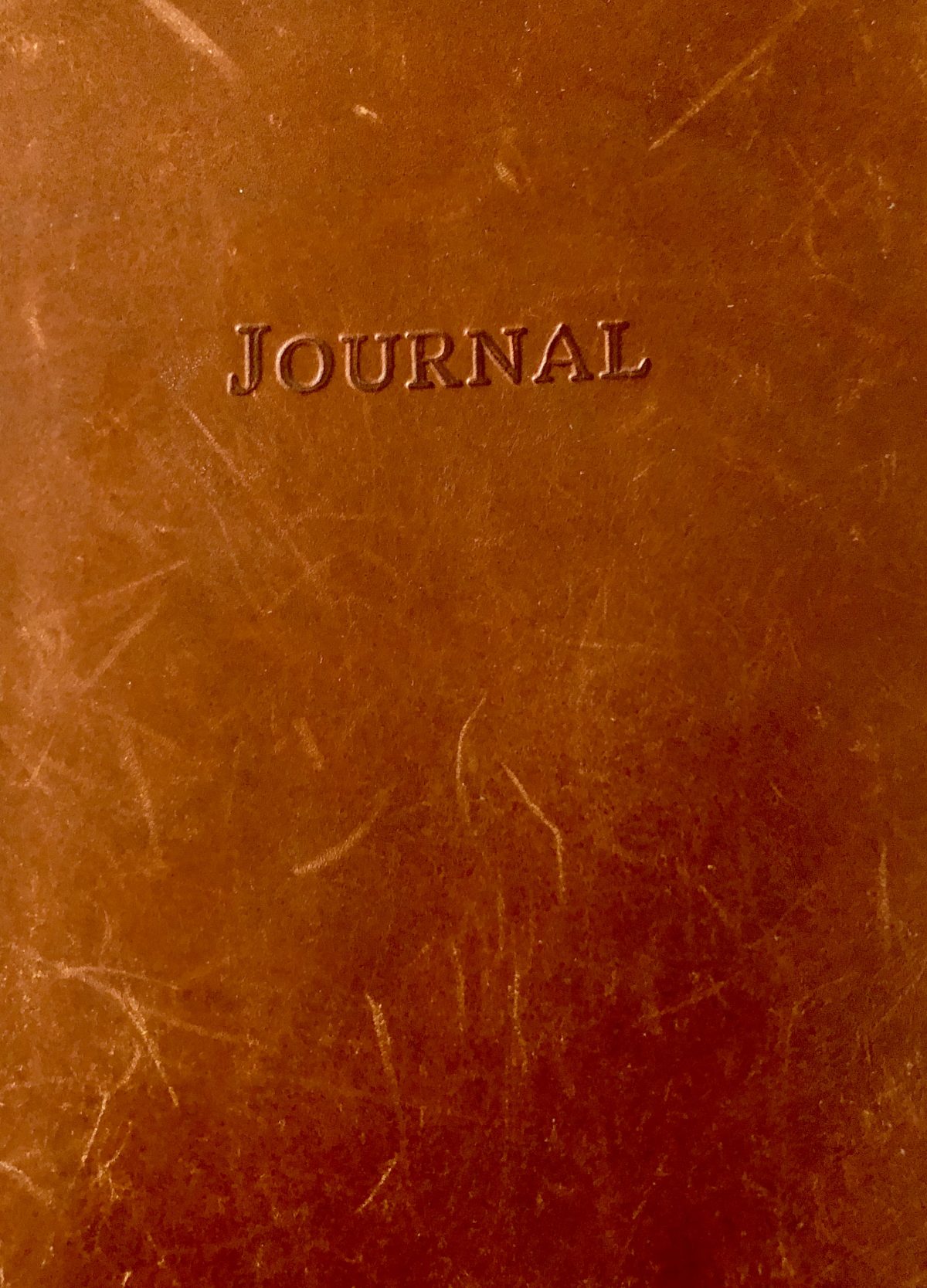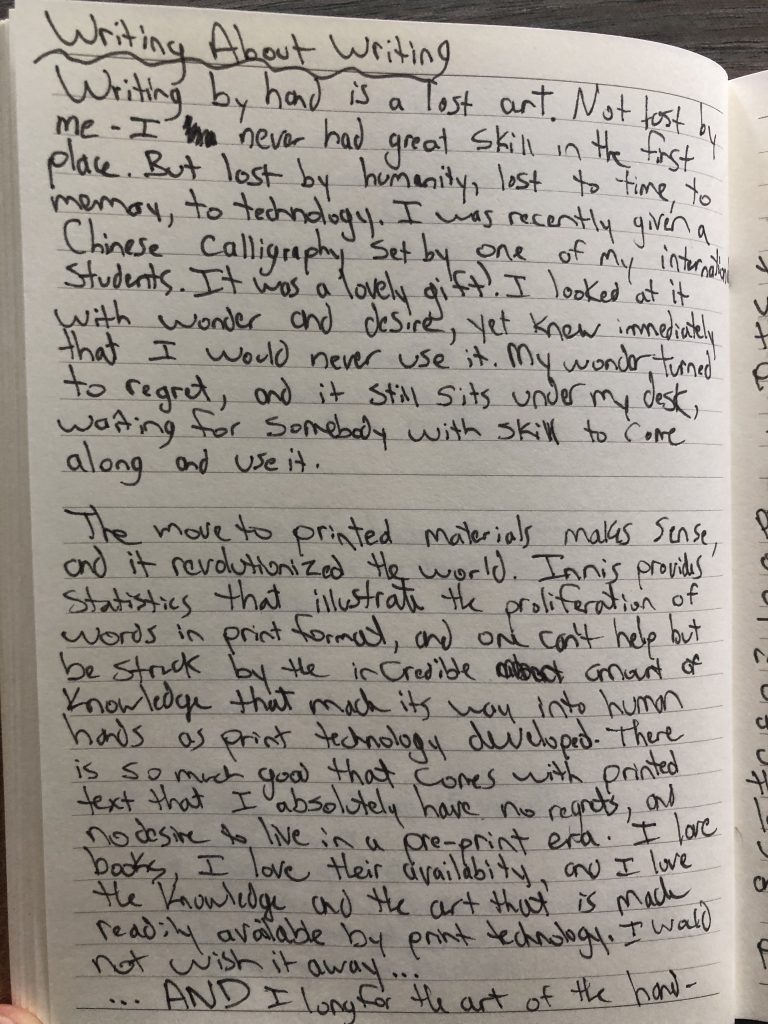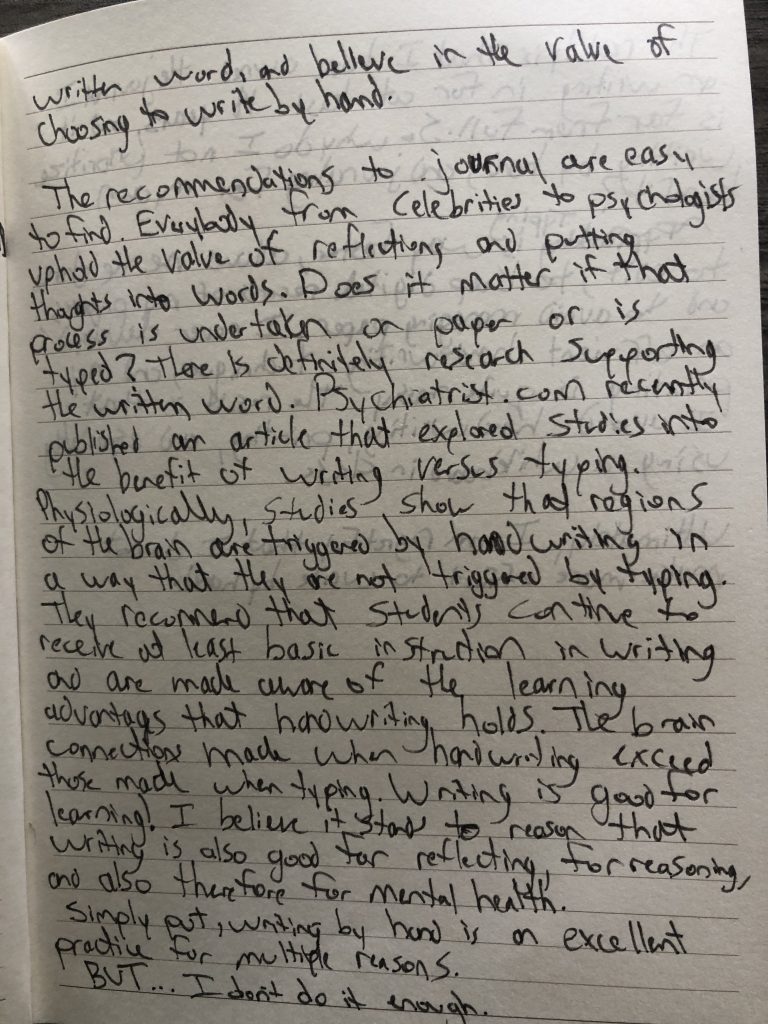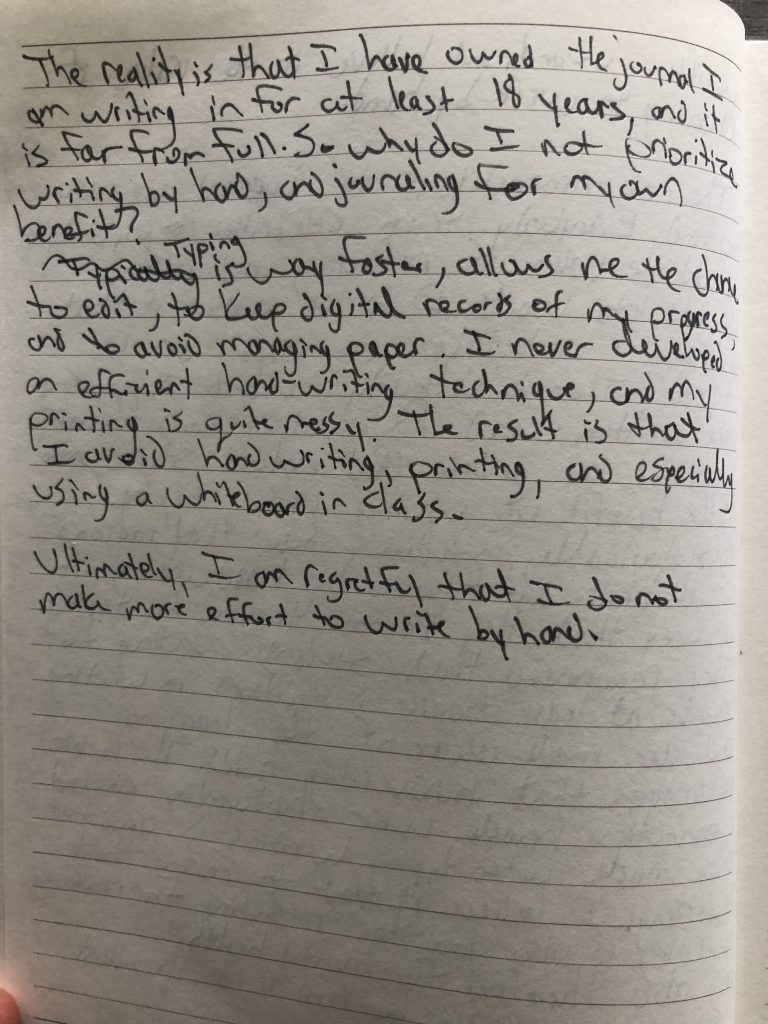For this task I used Speechnotes. I spoke it unscripted as asked, but this is a story that lives in our family lore and I’ve always wanted to write it up as a funny short story. A note of interest to me is that my dictation took over five minutes, but reading it back was notably less time. The act of storytelling was a thoughtful process that led to a slower pace. My analysis follows the transcription.
The Speechnotes Transcription:
So our family likes to go camping. My wife and I have done it right from the beginning of our time together, but when we had kids things changed. I was told there would be no more tent camping, and that a trailer would be necessary. So number of years ago we bought ourselves a little trailer and begin to Camp with our kids. We realize quick quickly that things change a lot when children are involved, and we began to take more stuff along. Once our kids were old enough, this definitely included bicycles
Now bringing bikes is not easy, especially when you have a small trailer and a small vehicle like we do. But I began carefully loading bikes into the trailer, always conscious of how I packed it in such a way that it wouldn’t damage but was inside. It was really awkward, a long time to set up when we got there and to load up before we left.
So I came up with a solution. I went on Amazon, ordered a bumper mounted hitch. I had this vision of the bikes riding along, enough the back of our trailer, which would mean easier loading, your setup, and less potential for damage. It was delivered, yep, again to follow the instructions. If you know anything about me you know that I follow instructions. And these instructions were very specific about tightening the bolts and and balancing the hitch. And so I did so, animals both very specifically to a to the proper weight, done I stood back and I was pretty pleased with myself. I loaded on those bikes, off we went to our favorite camping spot. We love camping outside Nelson BC, goonies are a wonderful place to be, I know it’s a bit of a drive, worth it to us. That week it was beautiful and hot. Never before had we cancel so long, going to stay for 8 Days, which we knew would really stretch the resources of our trailer. But it was a wonderful, waxing time in our family built some great memories. We spent the week playing in the lake, paddle boarding, exploring the area, enjoying the different culture that Nelson offered. We enjoyed our time with friends, laugh a lot, and really did not worry about much. It was about as perfect the time as we could have had as a family.
I’m about the 6th day, daughter came out of the trailer and said something very concerning. She said, daddy, toilet won’t flush! My stomach dropped. With some urgency, I went into the trailer and take a peek. Sure enough, the toilet tank was filled right to the brim. With urgency I told my family no more using the toilet. And we did pretty good for the last couple of days, as we enjoyed our time and got ready to leave.
The day of our departure I drove ever so carefully to the Sandy dump. I did not want anything splashing around, it’s very eager to empty that trailer and get it on the road. It was already hot, my family was waiting for me at the visitor center, and I had to wait in line for a little while. My turn I pulled up to the pump, walked around, and began to pull out the hose. With a clunk, it got stuck and would not come out of the bumper. With a mounting sense of horror, I realized that the tightening of the hitch on the bumper it squeezed it enough that the hose, rather the fitting on the end of the hose, could not slide past that tight Point. What was I going to do? I thought for a minute.
There was a lineup of other families waiting to empty the trailer so they can get on the road, and asking to borrow somebody else’s sanyo’s clearly does not fit within the realm of normal. I thought fast, the sweat coming now. Then I remembered that in the trailer was my son’s hockey stick. We had played with it throughout the week, and maybe it could help. I ran around and pulled it out, before taking it back to the bumper. Using it like a ramrod, like Mom comes troops on the plains of Abraham. I began to batter at the hose in the bumper. I was sweating as if the British troops were bearing down upon me. Once,, three times, many more, and suddenly those shot out of the bumper onto the far side of the trailer. Did you an awful lot of attention.
But it was out. I calmly walked around the trailer, pick those up off the ground, connected everything and took care of business as if nothing unusual had just happened. I may have even smiled and waved at the guy waiting behind me. I managed to do my Sandy dump, and I went to pick up my family. My wife irritably climbed in looked at me and asked why did it take so long? Never mind I said let’s go I’ll tell you later.
Analysis:
As I look over the text, I note that it is much more conversational than conventional written English in several ways. For instance, I began sentences with words like “so” and “now”, a practice that I would certainly comment on in my students’ written assignments. My paragraphs are not structured with a statement, evidence, and explanation as they might be in a more formal piece of writing, rather the paragraphs are divided according to the pauses in my storytelling. Other notable deviations include the lack of quotation marks for verbal sections
What is “right” in the text is the feel of it, the light-hearted effort at entertainment. Overlooking any of the “wrong”, or any mistakes, the text communicates a sense of authorship to tell a good story. With some tinkering, the text could be entertaining enough to evoke a smile.
What stands out as “wrong” is closely tied to the mistakes in the text. This was a story that referenced locations such as the Kootenays, and Speechnotes struggled to recognize those identifiers. It also had difficulties with terms that were camping-specific, such as “Sani-hose” and “Sani-dump”, and simply replaced them with words that do not make sense in context. I found it interesting that Speechnotes made mistakes such as word tenses, missing words, and added words. It made the mistake of simply placing words it believed I said rather than inserting them with adherence to grammar, sentence structure, and basic understanding. I find myself wondering how much it will change as they begin to utilize AI to make these corrections.
If I had scripted the text, I would have read with a more regular pace, avoiding repetition and pauses, and likely speaking with greater clarity. This would have provided Speechnotes with a source that would have been easier to transcribe.
Oral stories are made to be heard with the expression, and the character of the speaker. More than just words, oral storytelling is the complete personalized package of the storyteller. The meaning is not found entirely in the words, and the words may be less powerful or even incorrect in written form. Written storytelling must be well-structured, and “correct” in its conventions to avoid distracting from the narrative and the purpose. While the personality of the storyteller is critical to a meaningful and enjoyable story, written stories place that personality in the minds of the reader. Different readers will have different interpretations, feelings, and responses based on the manner in which they interpret the written words.
This was an enlightening and interesting experience. Based on this, I look forward to experimenting more with dictation technology.




